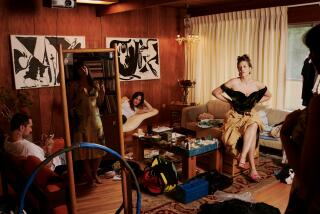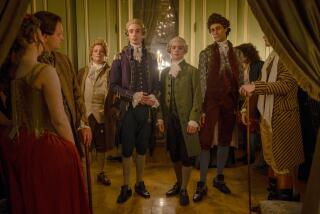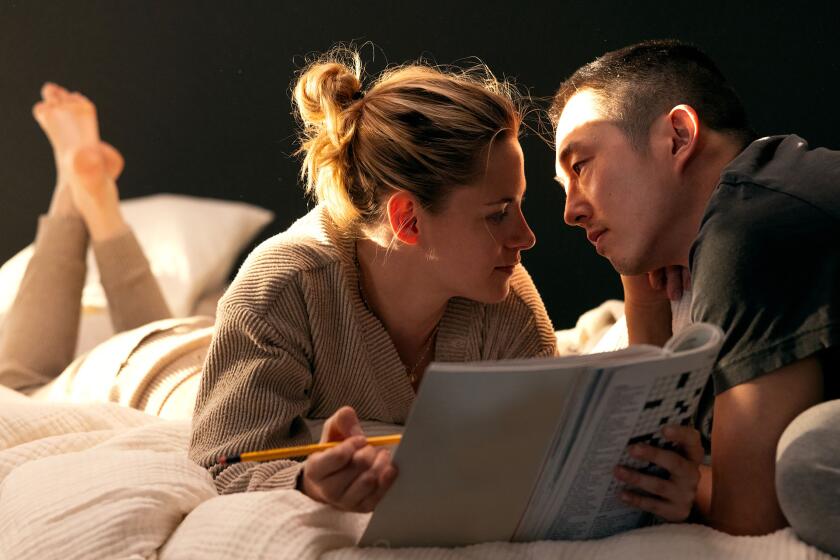And <i> This</i> Is Toned Down
- Share via
The Movie: “The Madness of King George.”
The Setup: England’s already-daft King George III (Nigel Hawthorne) loses his mind as well as control of the country.
The Costume Designer: London-based Mark Thompson, making his feature-film debut, who designed the sets and costumes for the original British stage production of “King George.” Here, he designed costumes for the Broadway productions of “Shadowlands” and “Six Degrees of Separation.”
The Look: It’s hard to believe that the entire bewigged lot--George, wife Queen Charlotte (Helen Mirren, pictured), the Prince of Wales (Rupert Everett) as well as functionaries and footmen swirling around them--were toned down so they didn’t look too silly to modern eyes. “We tried to streamline them so they wouldn’t look too grotesque,” as Thompson puts it. The effect nevertheless is a banquet of splendid, overripe costumery--from Charlotte’s Imperial margarine-style crown and lavish gowns buttressed with massive steel-formed panniers (side hoops) to George’s swollen ermine coat and fox-trimmed dressing gowns.
Trivia: Notice the different versions, and varying degrees of gold braid, of George’s red, white and blue “Windsor uniform,” which the king designed for himself and his sons, the Prince of Wales and Duke of York (Julian Rhind-Tutt). “He was mad about uniforms,” Thompson says, but the king didn’t put his wife and children in any. The final scene, showing the entire family--men, women and children--in matching garb, however, was Thompson’s artistic license.
Inspiration: London’s National Portrait Gallery for everything but clothes worn at court. “Unlike the court of Louis in France, who enjoyed having their official portraits painted in court dress, in England it was thought vulgar, so there are no paintings at all of court dress. There are some engravings, but those are the equivalent of the paparazzi taking a snapshot.”
Fashion Forward: The Prince of Wales was a trendsetter of his day. He was among the first to patronize English tailors who favored plain English wool over velvets and brocades.
More to Read
Only good movies
Get the Indie Focus newsletter, Mark Olsen's weekly guide to the world of cinema.
You may occasionally receive promotional content from the Los Angeles Times.










